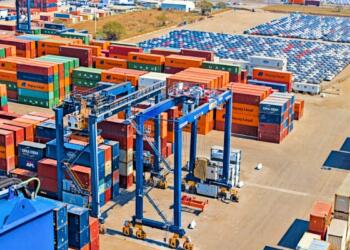
The textile industry in Mexico began in 1837 with four factories in Puebla, and by 1844 there were 47 factories nationwide. However, it was not until 100 years later, in 1937, that a business representation organization defending the interests of the industry was formed, giving birth to the National Chamber of the Textile Industry (Canaintex), highlighted its president, Rafael Zaga Saba.
On the occasion of its 87th anniversary, Canaintex presented the document “Understanding the Textile and Clothing Industry 2024,” prepared by the National Institute of Statistics and Geography (Inegi), which highlights that from 2003 to 2023, the number of establishments in this industry in the country grew by 156.8%, reflecting in jobs.
“Currently, our country has companies dedicated to the production of threads, fabrics, textiles, and finished products, among other sectors related to the production chain. This anniversary is a significant event reflecting the importance and impact of our industry. Let’s continue spinning stories and dressing Mexico and the world,” said Zaga Saba.
To give an idea of the importance of the textile and clothing industry, this sector had a positive impact on 60 out of 78 activities of the national economy or subsectors, generating employment and income in industries such as agriculture, chemistry, machinery, and equipment, among others.
According to Inegi, the textile and clothing industry has been mainly made up of micro-establishments employing up to 10 people, with 95.6% of the total, which generated only 5.7% of production.
In contrast, medium-sized establishments, with 51 to 250 people, represent 1.1% of the total, and large ones, employing 251 or more people, concentrated 56.3% of the employed personnel and 82.6% of the gross production.
Furthermore, the textile industry has integrated national supply chains, as for every 100 pesos of inputs used, 55.5 pesos came from national sources.
On the other hand, the document indicates that although in 1993 the textile industry represented 5.6% of Mexico’s manufacturing gross domestic product (GDP), reaching its highest representation in recent years, today the industry represents 1.9%, with data as of the end of 2023.
Additionally, it provides an overview of the textile industry’s GDP, which had an average growth of 6.5% between 1995 and 2000, thanks to the impact of the Free Trade Agreement with the United States and Canada.
However, the institute stated that this changed starting in 2001 when China joined the World Trade Organization (WTO), with a drop in the textile GDP from 131 billion pesos (mdp) to 115.75 billion mdp. In 2023, the GDP of the textile and clothing industry decreased by 8.4 percent.
Regarding production, in 2018, 65.6% of the total gross production was concentrated in the State of Mexico, Puebla, Mexico City, Hidalgo, Guanajuato, and Coahuila.
On the other hand, exports from this industry increased by 2.1% from 2022 to 2023, going from nine billion 100 million dollars (mdd) to nine billion 300 million mdd, while imports decreased by 1.7%, going from 13 billion 500 million mdd to 13 billion 300 million mdd.
The participation of the textile and clothing industry in the country’s manufacturing exports in the last three years was 1.8%, with this industry allocating 89.4% of its exports to the United States.
The main countries of origin of imports of products from the textile and clothing industry were China, with 35.4%, and the United States, with 24.6%.
Comment and follow us on X: @jenna_GH_ / @GrupoT21















